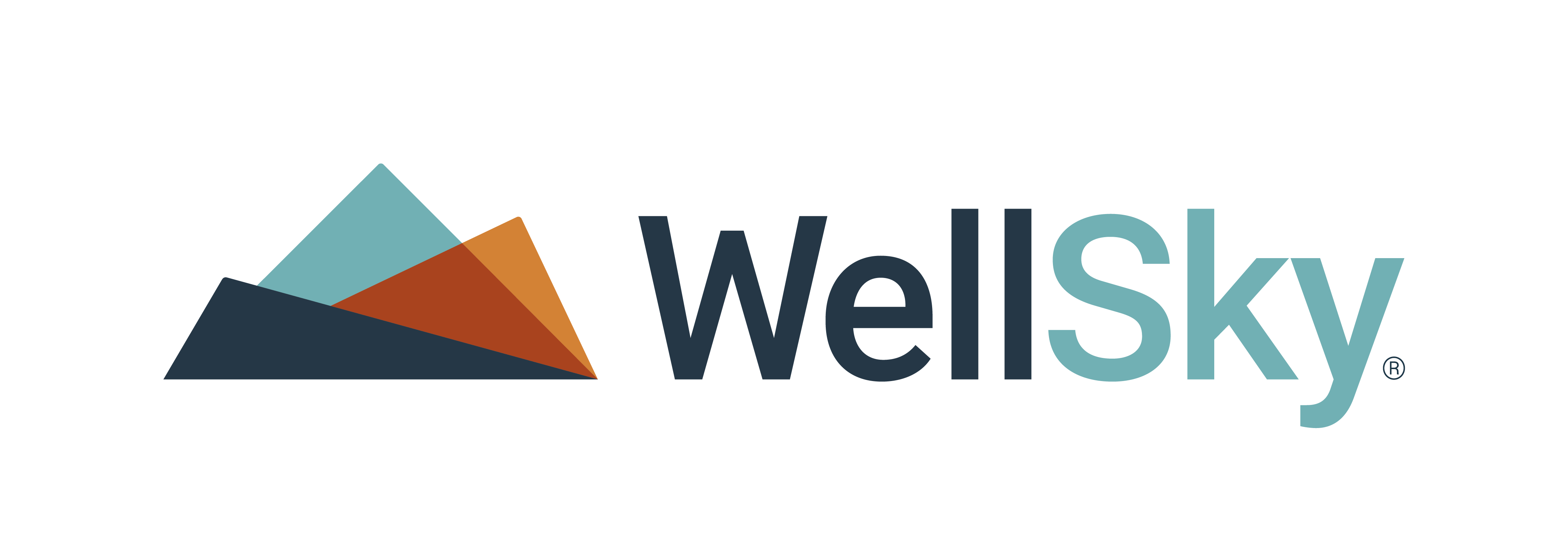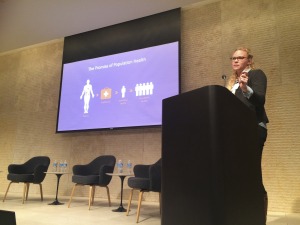By Ed Van Siclen, VP of Alliances at ClearCare Online
Can you live long and still prosper? That's a question on the minds of many Americans. "I know that I will live more years than my parents, but what will the quality of my life be like as I age?"
Over a 100 private-duty home care agencies in the Greater Delaware Valley region gathered at the world-renowned Barnes Foundation in Philadelphia on October 23rd, 2014 to discuss how they can have a lasting impact on the quality of life for the elder population in the United States. The dialogue entered on the theme, HomeCare 2.0.
The meeting was hosted by ClearCare Online, the company that I recently joined. Like so many of you in the home care industry, my participation in this industry was not by accident, but rather by calling. I am part of the so-called sandwich generation, which simply put, means I have an aging parent who I care for on one side and teenage children who are still in the ‘nest’ at home on the other. That leaves me and my wife sandwiched in the middle.
A recent event brought all of this into sharp focus: My mother was in a car accident; or more accurately, she caused the accident. After several days, she finally remembered to mention the accident to me. Well, that was the trigger. We quickly discovered that my Mom was suffering from the onset of dementia. And so began the slow, emotional and challenging journey of caring for a dependent elder with dementia. In stark contrast to my mother, my 76 year old father-in-law enjoys excellent health and still tours the back country of Nevada on his motorcycle with his childhood buddies. While he has endured the occasional mishap on his motorcycle, he has always bounced back, unharmed. But how long will that last? And are my wife and I ready when “it” happens?
These experiences have opened up my eyes to the two sides of the aging equation: The sense of urgency that happens after a crisis rocks you back on your heals -- and the unequivocal value of being proactive when mapping out preventative care as we age. For me, the key issue is this: how do we allow elders to age gracefully where they are comfortable? What is the plan? What role does home care play to support my parents wishes to age in place?
The elder population is the fastest growing population in the US, yet it is quite possibly the one we are least prepared for. When ClearCare hosted these home caregivers to meet for an afternoon of ideas, dialogue and inspiration, we frankly weren't sure what to expect. The people at this unique venue, and the resulting dialogue, exceeded our expectations by a wide margin. The event was so energizing!
People who care for others are passionate; they are hungry for solutions; and they are prepared to adopt innovation and change if it means improving outcomes.
Home Care 2.0 addressed the changing landscape of care in America and provided vision, insight and actionable strategies that the audience could take back to their home care agencies and put into practice the very next day. Attendees of HomeCare 2.0 heard from three perspectives:
- The CEO of Pennsylvania's Home Care Association, Vicki Hoak
- A Leading Author and Expert on Global Caregiving Practices, Lauren Taylor
- A Philadelphia ACO Healthcare Leader Focused on the Elder Population, Dr. Stefanacci
These three views of caregiving and aging at home offered a powerful look into the opportunities and possibilities that exist both for those needing care and the agencies that are offering care.
Viewpoint #1 - Vicki Hoak, CEO of the Pennsylvania Homecare Association, kicked off our TED Talk styled presentations. The PHA's mission is to advance the home and community-based services industry through education, collaboration and advocacy. As she so boldly put it, “Things must change and it boils down to money.” As the industry is evolving and in order to position your agency to succeed in the dynamic and critical market, you must:
Be aware - “If you are not at the table, you will be on the menu”
Get involved - “Healthcare is politics – vote!”
Look ahead - “The boomer generation is an action generation. They had kids and all went back to work and there were daycare centers at every corner. This will be the same.”
Viewpoint #2 - Lauren Taylor, author of the bestseller, The American Health Care Paradox speaks to Why Home Care can Make Health Care Healthier
In both domestic and global contexts, Lauren Taylor (author of the bestseller, The American Health Care Paradox) studies how to build boundary-spanning partnerships for the purpose of improving population health. American’s Healthcare paradox is that the US spends the most money globally on health care but ranks in the lower brackets based on outcomes and longevity.
In our nation, there persists a cultural and structural dissociation between social services and health care, which in turn leaves home care out of the healthcare dialogue where it rightfully belongs. By stark contrast, many European governments have openly embraced social services as an integral ingredient to delivery of health care, and their outcomes are staggering and far out pace the outcomes in our country.
There are many barriers to integrating home care into the current healthcare apparatus, including technological and data limitations; differences in cultural and professional norms; and non-alignment in incentives. “When we neglect social service investment, what is social by nature goes into healthcare doors."
Ms. Taylor suggests multiple calls to action:
- Identify the key stakeholders
- Expose the cost of current system where there is waste
- Identify potential allies on the other side (within the healthcare ecosystem)
- Think Global, Act Local: “The more we localize the decisions the better we will be – it should be a partnership between you and someone you know. It must be a true grassroots effort.”
Her research shows that healthcare’s front line (ie nurses) is frustrated. Their power, professionalism and performance are being marginalized. They know the system is broken, because they can no longer do their jobs effectively, but rather are pulled into administrative tasks and caregiving that does not require nursing skills. They are more open to creative thinking now then they have ever been.
Her observation is that ACOs (Accountable Care Organizations) were supposed to be a creative solution to enable different, more efficient approaches to healthcare. That promise has not been realized and the system is failing. In her estimation, the ACO model can only work when you identify a good partner and start small. There is no national plan here. As she said, “ It’s not rocket science, someone just has to take ownership”.
Viewpoint #3 - Looking from the inside out by Dr. Stefanacci
Dr Stefanacci, a Philadelphia ACO healthcare leader, has been providing care for the elder population for his entire career. From his perspective within healthcare, he exhorted the audience to confidently define and articulate WHAT home care is; to be creative; and most importantly, be proactive. He challenged those of us in the home care industry to create an identity, establish benchmarks and deploy standardized metrics that will foster collaboration with the institutional healthcare establishment.
Data will play a pivotal part in this process and will ultimately serve to provide credible and reliable benchmarks. The data will unequivocally prove the value of home care. Hospitals, while they excel at marketing themselves, are imperfect and unable to offer the full gamut of care needed in our country. As physicians are being held more accountable, YOU can help them get a better grade. Re-admission is a huge issue, so prove that you can impact the process; prove that you can reduce re-admission rates; prove that your service can eliminate Medicare penalties from being levied against hospitals who suffer from poor re-admission rates. COLLECT DATA — data will amplify your value to this audience.
How Our Elder Population Will Prosper
Panel Discussion Takeaways: Not surprisingly, the audience was engaged and passionate around these topics. Themes that emerged included:
- This private duty home care audience wants a seat at the caregiver table, and they aren't sure how or where to begin.
- There is an overarching sense of hopelessness around how to navigate and influence a regulatory environment that is already so convoluted.
- How should they forge relationships at a local level that are pushed up to Washington?
- And at a very practical level, how do you get the attention of a local discharge manager to “hear your pitch”, to take your call and to place your home care agency in the referral flow to support post acute episodes?
Another big issue raised was caregiver fatigue – there are too few people doing too much work. Caregiver burnout is the #1 factor of why patients go into nursing home.
After this meeting, talking with the speakers, and meeting with the home caregivers who attended, I felt a sense of optimism and hope for people like my mother and father-in-law. Some of the most intelligent and most passionate people in this country are focused on making sure they live full, independent lives and that their wishes to age gracefully in their homes can be a reality. The Home Care industry has a big role to play in this outcome, and to succeed, there are three things that stood out.
Work Force: Home care agencies must offer more than service. Focus on real value for the elders and their families. “It is no longer enough to just pay for your service, they are paying for your value”. Direct care worker force is the 3rd fastest growing industry, – this hits on licensure, managed and coordinated care, family caregiver influence, pricing. These are issues that need to be streamlined and simplified.
Technology will never, and should never replace the hands-on caregiving that home care agencies provide. Technology should facilitate caregiving, and relieve the work force of tasks that keep them from providing personal care. And collecting data is the only way that the industry will be able to validate better outcomes. “If you want to survive you will have to share data with a managed care company.”
Competition: There are a multiple options out there. Home Care needs to unite and be the most compelling option in terms of outcomes, price and experience. Partnerships with hospitals, nursing homes, ACOs, MCOs will be key to success.
WHAT’S NEXT?
To quote Vicki, “the word "care" in "healthcare" is like an iceberg – you can see the professional healthcare system at the surface, but hidden underneath is a much larger effort provided by home care givers and their families.” Home Care 2.0 is an effort to unveil that the possibilities and unleash the potential that we hold in our hands. With that in mind, we invite you to continue on the journey with us. We welcome your feedback, and we look forward to seeing you at conferences around the country. We are all in this together.
CONTACT INFORMATION & LINKS
Information about the Pennsylvania Homecare Association
Lauren Taylor's The American Health Care Paradox
Dr. Stefanacci's Foundation - Go4theGoal
ClearCareOnline, Leading technology provider for non-medical home care agencies






